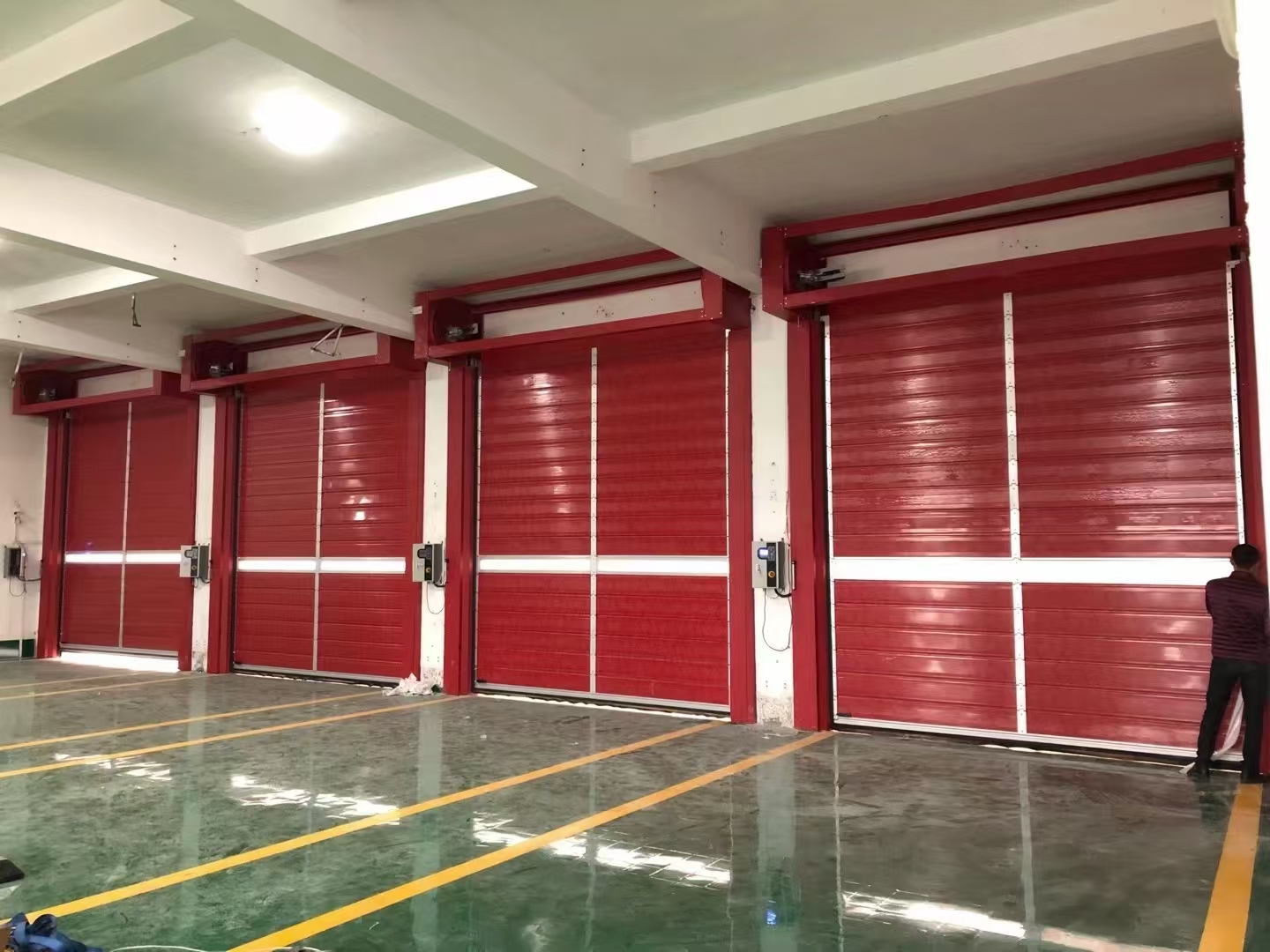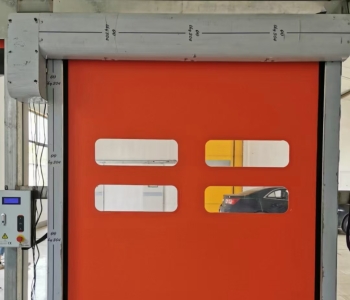High-Speed Doors in Smart Home Applications: Efficiency, Safety, and Integration
1. Technical Features Aligned with Smart Home Needs
Rapid Response and Automation:
Equipped with radar, infrared, or magnetic sensors, these doors operate at speeds of 0.6–2.0 m/s, enabling seamless integration with smart home systems. Remote control via mobile apps or voice assistants (e.g., Alexa, Google Home) ensures hands-free operation.
Energy Efficiency:
High-seal designs (e.g., PVC with EPDM gaskets) minimize indoor-outdoor air exchange, reducing HVAC energy consumption by 15–25%. This aligns with smart energy management goals for temperature-controlled spaces like wine cellars or insulated rooms.
Safety and Smart Protection:
Multi-layered safety mechanisms include infrared anti-pinch sensors, pressure-sensitive edges (trigger force ≤2 kg), and emergency release functions. Integration with home security systems enables real-time alerts for unauthorized access or operational anomalies.
Low Noise and Aesthetic Design:
Operating noise below 60 dB ensures minimal disruption. Customizable finishes (e.g., matte surfaces, transparent panels) blend with contemporary home aesthetics.

2. Key Applications in Smart Homes
Smart Entry Systems:
High-speed doors with biometric access (facial recognition, fingerprint/NFC) sync with security cameras and smart doorbells for remote monitoring and access control.
Garage and Vehicle Access:
Automated doors with vehicle detection sensors enable rapid opening/closing (≤2.0 m/s), reducing wait times. License plate recognition systems can trigger door activation for seamless vehicle entry.
Indoor Space Partitioning:
In open-concept homes, these doors serve as flexible dividers for living areas, kitchens, or home offices. Voice-activated controls allow instant spatial reconfiguration.
Premium Residences and Villas:
Doors with thermal insulation, noise reduction, and dustproofing enhance environments like home theaters, gyms, or climate-controlled storage rooms. Integration with whole-home automation systems (lighting, HVAC) supports scene-based controls.

3. Integration with Smart Technologies
IoT and Platform Compatibility:
IoT-enabled doors connect to ecosystems like Apple HomeKit or Samsung SmartThings, enabling cross-device automation (e.g., activating lights and AC upon door opening).
Predictive Maintenance via Data Analytics:
Embedded sensors monitor motor temperature, cycle counts, and wear patterns. Cloud-based analytics predict maintenance needs, reducing downtime.
Emergency Response Automation:
During fire or smoke detection, doors automatically open to create escape routes while syncing with fire suppression systems to contain hazards.

4. Industry Trends and Innovations
AI and Edge Computing:
AI algorithms learn user habits to optimize door operation schedules, such as pre-opening for expected arrivals.
Sustainable Materials and Solar Integration:
Recycled PVC and solar-powered drive systems align with net-zero home initiatives.
Conclusion
High-speed doors are pivotal in transforming smart homes by merging automation, safety, and energy efficiency. Their adaptability to IoT frameworks and user-centric design ensures they remain essential for future-ready, intelligent living spaces. For deployment, prioritize models that align with specific spatial needs and ensure compatibility with existing smart home ecosystems.
Q1: What are the key advantages of high-speed doors in smart homes?
A1: High-speed doors enhance efficiency with rapid opening/closing (typically 1-2 m/s), minimize energy loss (e.g., preventing HVAC leakage), and support seamless integration with smart home systems (e.g., voice control, automation scenarios), balancing convenience and energy management.
Q2: How is safety ensured to prevent pinching or collisions?
A2: Modern high-speed doors feature multi-layer protections: infrared sensors (halt upon detecting obstacles), pressure-sensitive edges (instant rebound upon contact), and AI vision monitoring.
Q3: Will the noise from high-speed doors disturb household activities?
A3: Premium doors use silent rails and shock-absorbing motors, limiting noise to ≤50 dB (equivalent to normal conversation). Some models offer a "night mode" for further noise reduction.
Q4: What structural requirements exist for installation?
A4: Sufficient overhead space (≥30cm) is needed for the drive module, and walls must meet load-bearing standards (typically ≥80kg/m²). Older homes may require professional reinforcement assessments.
Recommended Products
up to dateIndia Automatic Door Accessories
- Durable PVC Fast Rolling Door Fittings for Enhanced Security
- Automatic Repair of Zipper Door Plastic/Polymer Rails
- Smart Automatic Door Sensor for Fast Rolling Access Control
- Soft Fast Gate Control System 1.5kw Servo Motor and Control Box
- Automatic Access Control Square Surface Mount Infrared Non-Contact Switch
- Explosion-Proof Reinforced Self-Limiting Electric Heating Belt
- Explosion-Proof Shielded Self-Controlling Temperature Electric Heating Belt
- Heating Belt for Anti-Freezing, Heating and Heat Preservation of Cold Storage Doors
- 40W flame retardant explosion-proof self-limiting electric heating belt
- High Speed Door Zippers Industrial Door Zippers
- Safety Beam Sensor Use for Automatic Door
- Wireless Hand Sensor Switch For Automatic Door
- Hospital Door Foot Sensor
- Automatic Sliding Door System Wireless Touch Press Switch
- Automatic Sliding Door IP65 Waterprooft Wireless Hand Press Switch
- Automatic Door Microwave Sensor
- Reflective Type Infrared Detector
- Automatic High Speed Door Infrared Radar Sensor CNB-204G
- Aluminum Alloy Wind Section For PVC rapid roller shutter door
- Aluminum Bottom Section For PVC high speed rolling shutter door







